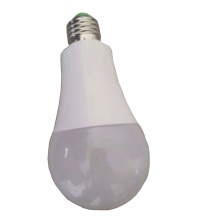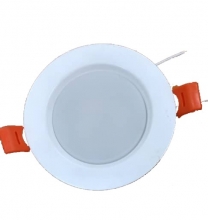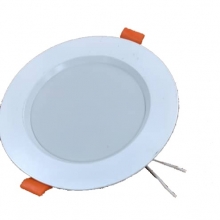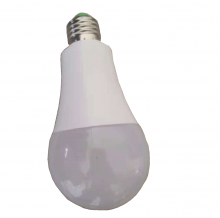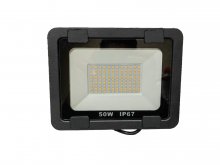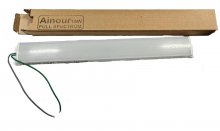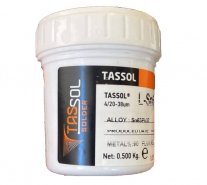How To Use Grow Lights To Grow Healthy Plants Indoors

From choosing the right bulb to knowing how long to leave it on, here's how to keep you houseplants happy and healthy with grow lights.
The grow light industry is, well, growing like a weed. From Arctic greenhouses and urban gardens to legalized marijuana farms, the lights we use for growing plants indoors have sprouted into a multi-billion-dollar industry.
Closer to home, on our windowsills and coffee tables, we’re becoming evermore fascinated with our leafy ficus, stoic cacti and aromatic oregano friends.
“We know from research that keeping indoor plants has many benefits, such as reduced anxiety and stress, improved productivity and focus, and even improved healing,” says Leslie F. Halleck, an author and certified professional horticulturist.
“So in terms of wellness, bringing some nature indoors can have a very positive impact on our lives. Beyond the mental benefits, plants bring so much dimension, aesthetically, to our homes and offices. Plants literally bring our indoor spaces to life.”
It turns out some of those plants would also love a grow light, at least for part of the year.
What Is a Grow Light?
Grow lights allow us to cultivate various plants indoors, regardless of the season or available sunlight. They use a specific ratio of wavelengths, mostly in the red and blue spectrums, which are ideal for helping plants photosynthesize.
Their effectiveness depends on:
- The intensity of the lamp (known as the photosynthetic photon flux density or PPFD);
- The wavelength (the spectrum of light, known as photosynthetically active radiation or PAR);
- The proximity of the lamp to the plants;
- How much natural sunlight the plants are also getting (like if they are on a windowsill versus in a dark corner);
- What time of year the plant “thinks” it is, based on available supplemental light.
Types of Grow Lights
Which type of grow lights you use depends on what you’re growing. For some plants, it can get pretty complex. Here are the basics.
Here are the three main types of lights for indoor home use: Fluorescent, low-power LEDs and high-power LEDs.
Fluorescent Lights
These are the old-schoolers of the grow light world. They owned the show until the flashy LEDs strolled onto the scene. They don’t last as long as LEDs, are bulkier and less sustainable, but they are easy to find and still a worthy option.
Halleck recommends HO T5 fluorescent lamps, which produce less heat than the old bulbs and are more energy efficient. Handle them carefully; some fluorescent lamp ballasts contain mercury. If you have a fluorescent fixture but want LED lights, some LED replacements look like fluorescent tubes.
Pro tip: On fluorescent lamps, there’s a ballast inside the light fixture that generates heat, so one section will be hotter than the rest. This means sometimes the plants under the ballast will show heat stress.
LED Lights
These are easier on the electric bill and last longer than fluorescents, but the quality ones are often more expensive. The challenge with LEDs is figuring out if the intensity is adequate, because watts are not an accurate measure with LEDs.
“We can measure how many photons of photosynthetically active radiation (PAR) are being given off by a light, and that’s linked to wattage, but using wattage is really not a useful spec,” says Jonathan Ebba, a field specialist with the University of New Hampshire Cooperative Extension.
“Reputable manufacturers will publish the intensity information [of their grow light] in terms of moles of useful photons delivered per square meter per second. A mole is a number, a six with 23 zeroes. It’s a way we count photons.”
Low-power LEDs are the inexpensive ones that pop up first like a field of dandelions in your online purchase search. They’re often good enough for foliage houseplants or small succulents. But they’re not much good for plants that need intense light, like tomatoes, citrus and herbs.
Many emit a pink or purple color, so if you don’t want that in your living space, Halleck recommends looking for ones with a full or broad spectrum of white-colored light.
High-power LEDs are ideal for edible plants, larger floor houseplants and actually pretty much anything that isn’t a windowsill plant. To get ample light intensity (PPFD), you mostly get what you pay.
“There are a lot of cheaply made grow lights on the market these days, so I typically recommend buying lamps made in the U.S.” says Halleck. “I find quality and longevity is better, as well as care of shipping and customer service.”
Other household lights are not so good for growing plants. Incandescents get too hot and their spectrums are heavy with yellows and greens, which do not promote photosynthesis well. Halogen lights put off excess heat and are poor with energy efficiency.
Note: Another consideration is light spectrum. Lights are broadly divided into cooler and warmer spectrums. Cooler lights (>5,000K) better support leafy growth while warmer lights (<5,000K) encourage more flowering. “However, most plants will grow just fine under a balanced broad spectrum grow light,” says Halleck.
How To Use Grow Lights
Succeeding with grow lights will be a process of trial and error. So have fun, experiment and don’t get discouraged too quickly.
Here are a few steps to help you succeed:
- Choose your bulb wisely. Figure out what you want to do with the light before you buy it. Remember: More expensive lights may only need to be on a fraction of the time as their cheaper counterparts. “If it’s a matter of growing seedlings for transplant, you should get some really bright lights, say a good bank of two or four T5 fluorescents,” says Ebba. “Most houseplants are meant for low light. In that case, getting one of those little $30 grow lamps and putting it in the window to supplement light might be completely adequate.”
- Put the lights close to the plants. “The closer to the crop, the more of that light is going to be used by the plant,” says Ebba. It varies by lamp, but six inches is a good rule. If a light is a foot or two away, it decreases intensity dramatically, by about 75 percent. If you’re using a bank of shop lights, hang them on adjustable chains so you can easily move them as the plants grow.
- Use a timer. Some plants do better under consistent daily light. “If you have a plant that is day-length sensitive, giving it eight hours one day and then 22 hours the next might be confusing,” says Ebba.
- Research the amount of light each plant needs. Think of a plant’s light needs as filling up a bucket, Ebba says. That bucket fills with photons. How fast it fills depends on the intensity of the grow light and whatever natural light the plant gets. Most houseplants have small buckets, lettuce is slightly larger, and fruit and ripening tomatoes have really big buckets. “Most herbs are pretty high, full-sun plants,” says Ebba. “For my herbs, I’ll put them on a bright windowsill and hang the shop lights above them for 14 hours a day in addition to the sunlight, or 22 to 23 hours if no sun.”
- Mimic the day length the plants are used to. It doesn’t matter for all plants but will for some, especially basil. “Plants that evolved in temperate zones know what month it is based on the length of the night, so some of them do different things such as flower, or stop flowering based on how many hours they perceive light” says Ebba. “But stuff that’s near the equator doesn’t have that response since daylight is consistently 12 hours all year long.”
- Don’t forget the water. It’s actually a myth that succulents like aloe don’t like ample water. Usually, they aren’t getting enough sunlight to use all the water. Also, for seedlings, keep them evenly moist. If they look stretched with lots of space between their leaves, they need more light. For more technical information on growing seedlings, here’s a comprehensive paper from Ebba.
- Maintenance and safety. Clean your lighting apparatus as needed for maintenance, but be cautious. “People’s windowsill gardens are a delightful mixture of water and electricity,” says Ebba. “Be careful. Don’t get these things wet.”
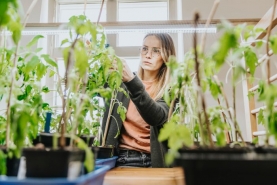 26 February 2022
356
26 February 2022
356
From choosing the right bulb to knowing how long to leave it on, here's how to keep you houseplants happy and healthy with grow lights.

